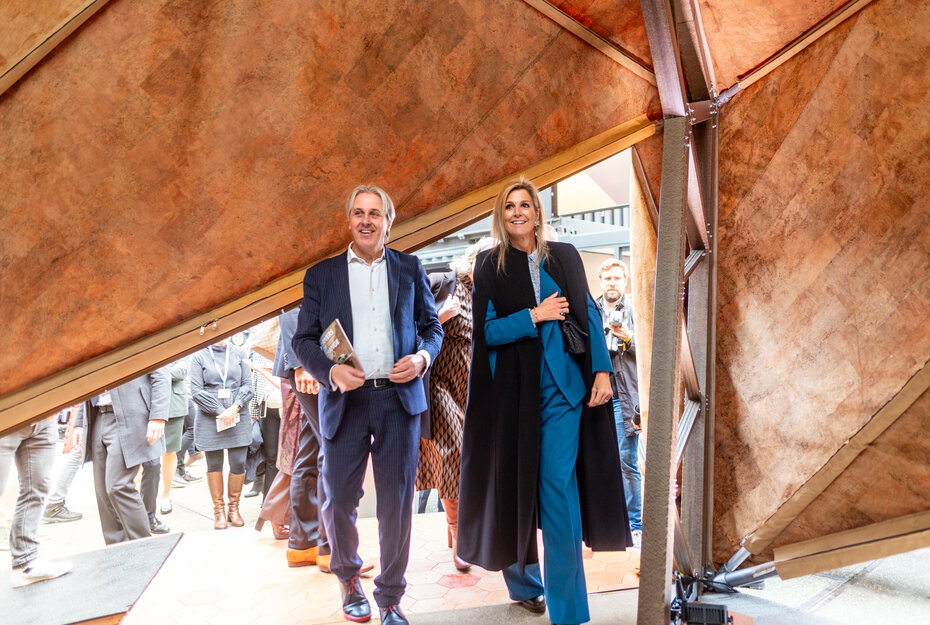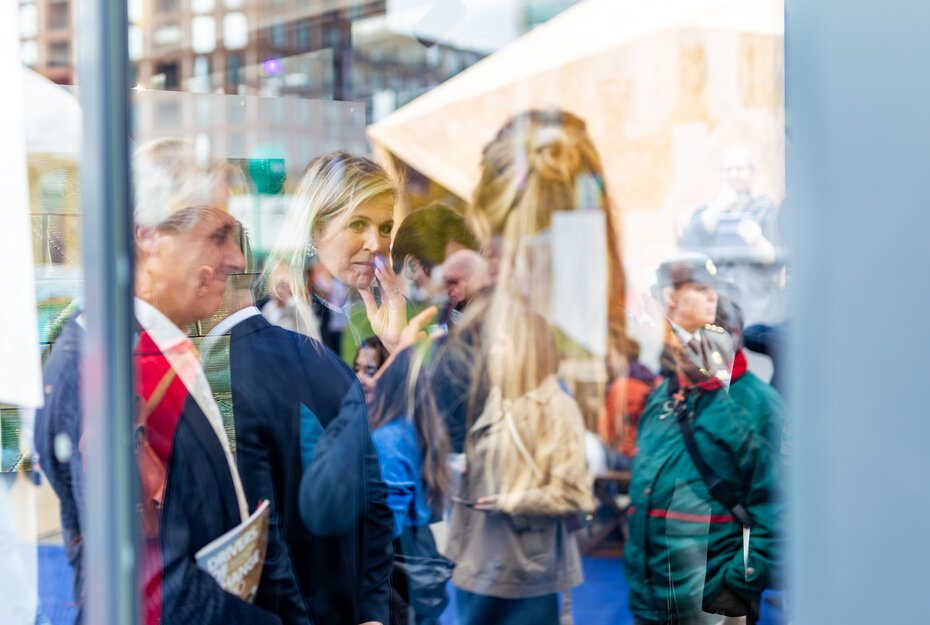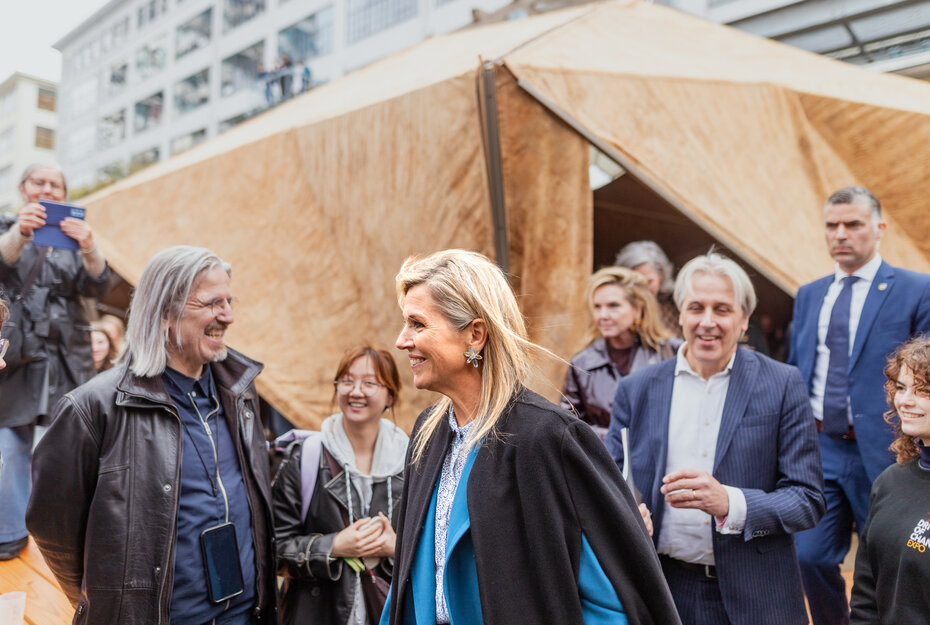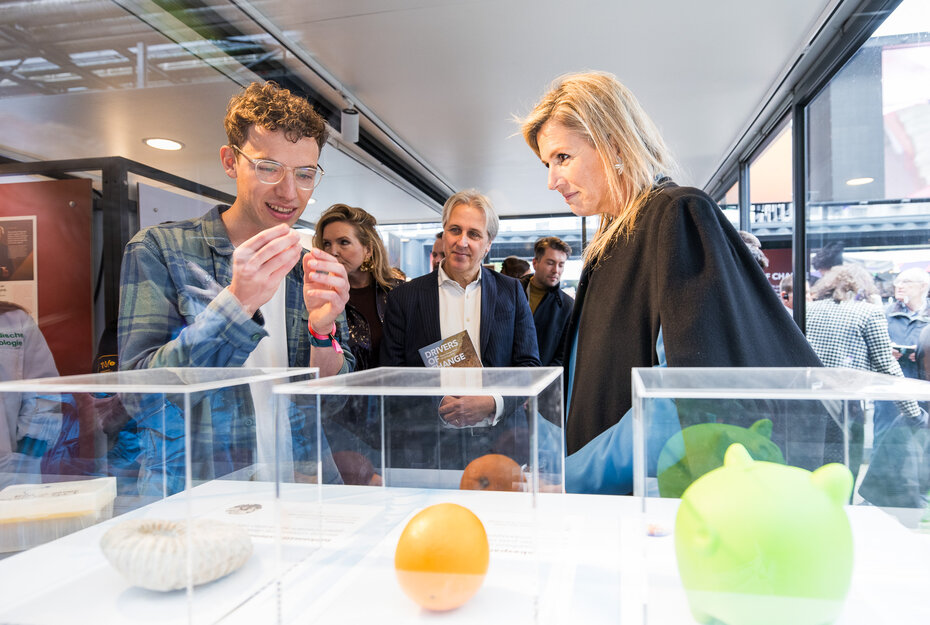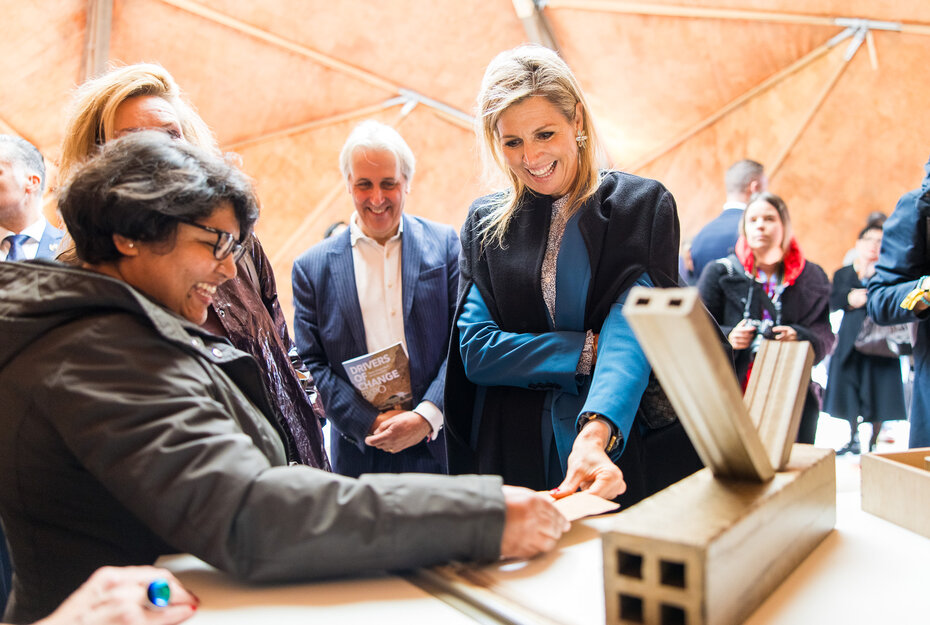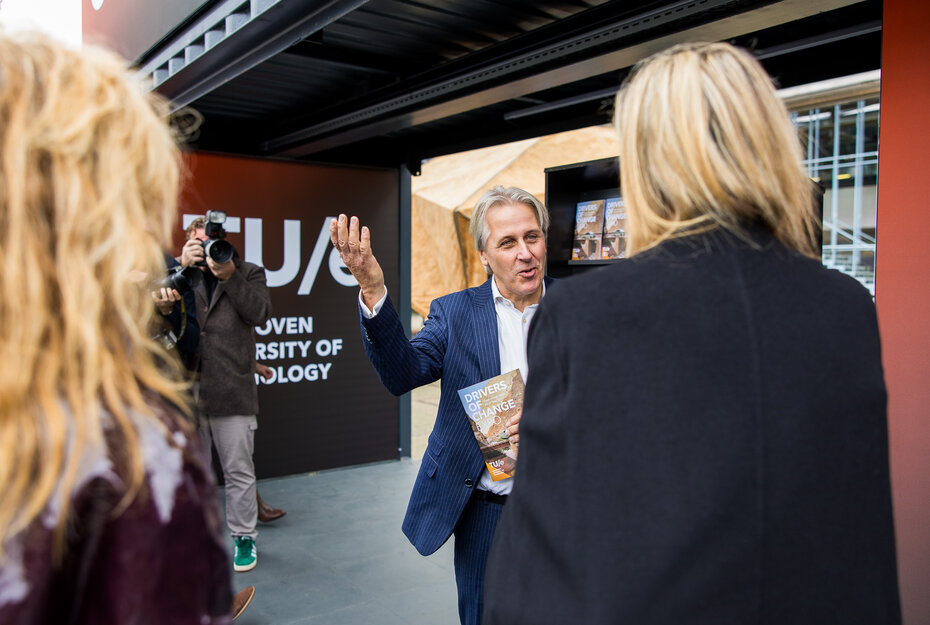Queen Máxima impressed by TU/e exhibition at DDW
Queen Máxima paid an informal visit to the Dutch Design Week on Thursday, taking ample time to explore the TU/e exhibition 'Drivers of Change.'
![[Translate to English:] Queen Máxima in conversation with PhD candidate Bas Bögels about the Data Storage in DNA project. Photo: Christ Clijsen](https://assets.w3.tue.nl/w/fileadmin/_processed_/2/2/csm_20231026_DDW_TUe_Maxima-0007-7047_d97d1deb11.jpg)
While the Dutch Design Week has been attracting numerous visitors for years, it was quite exceptional for queen Máxima to visit the event in Eindhoven. She did so at her own request, accompanied by a close friend. Queen Máxima took a detailed look at the TU/e exhibition 'Drivers of Change,' despite the vast array of offerings at DDW. The university showcased twenty projects from designers and researchers at the Ketelhuisplein.
The queen delved into projects such as RescueRATs by Sander Verdiesen. Verdiesen, an Electrical Engineering alumnus, aimed to contribute to society and became involved with the Belgian organization APOPO. This organization trains rats to search for people under rubble. He developed special "backpacks" equipped with cameras, GPS, and walkie-talkies for the African giant pouched rats used in this effort. With the backpacks, these rats can navigate through the smallest openings under rubble and locate victims. When they find someone, they press a button on their chest. The rescue team tracking the rats receives a signal and can initiate a rescue operation.
"A little afraid of rats"
Queen Máxima confided to Esther Haalboom of APOPO that she is a little afraid of rats. However, after receiving an explanation about this project, her fear lessened. The rats are still in training, and the design of the backpacks is almost ready for actual use in rescue missions after several prototypes.
The photos below are made by Rien Boonstoppel and Christ Clijsen.
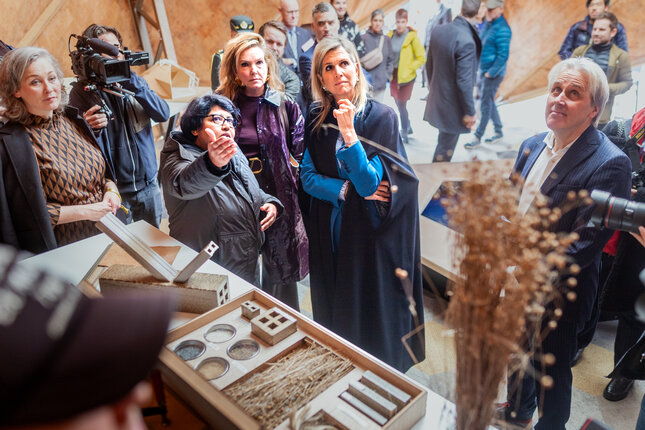
This is something I'll always remember.
EngD-trainee Snehal Hannurkar
The queen was also very impressed by the uniquely designed BRIC pavilion. It is constructed with hollow profiles of flax, hemp, and wood waste, with a canvas made of cork. It is easy to assemble and dismantle and fully recyclable at the end of its lifespan. Snehal Hannurkar, EngD trainee at TU/e, found the queen's attention to her work overwhelming and was surprised by how much she already knew about the project.

Digital data in DNA
The same enthusiasm extended to the project of PhD candidate Bas Bögels. His research focuses on storing digital data in DNA, making it possible to store vast amounts of data more efficiently and for an extended period, up to ten thousand years. Bögels is creating a kind of DNA "hard drive," the natural information molecule.
I really had the time to tell my story.
PhD student Bas Bögels
The data storage DNA is synthetic, containing the DNA pearl chain with the four letters A, C, T, and G. Just as nature uses these letters to store information, digital data can be stored in the same way. DNA data storage is expected to become a reality within the next ten years. With Bögels' PhD, everything should be all right, as he jokingly noted, "It is royally approved."
Latest news



